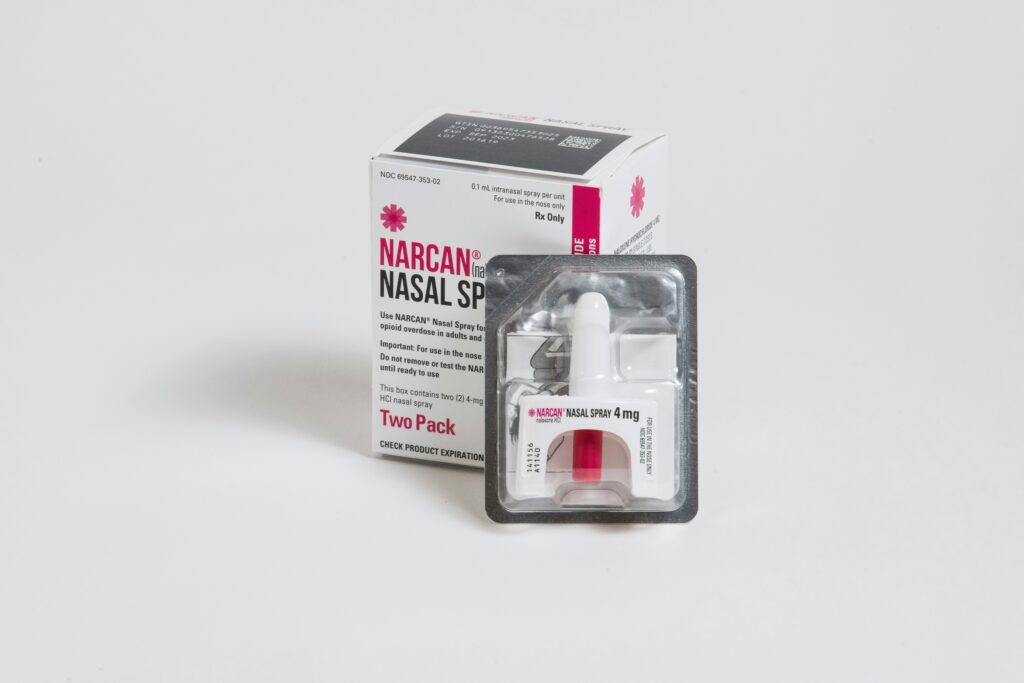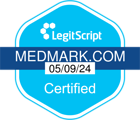Overdose is a frightening possibility if you or someone you know is taking opioids like prescription pills, heroin or morphine. According to the Centers for Disease Control and Prevention (CDC), more than 760,000 people have died from opioid overdoses since 1999. Naloxone (or Narcan) is a medicine that can reverse overdoses and save lives. Learn more about Narcan, how it works and how it can help prevent overdose deaths in your community.
What Is Narcan?
Narcan, the name brand of Naxolone, is a medicine that can quickly stop a known or suspected drug overdose. Naloxone attaches to receptors in the brain, blocking or reversing the effects of opioids. This medication is used in emergencies to help someone experiencing an overdose and rapidly restore their breathing. Naloxone only works on patients with opioids currently in their system. It is not a treatment for persistent addiction or opioid use disorder.
How Does Narcan Work?
Naloxone comes in two forms: an injectable and a nasal spray. Narcan is a brand name of Naloxone in the nasal spray form. While medical professionals typically use injectable naloxone, Narcan requires less formal training and can be easier to administer. It is easier to use so friends, relatives and community members can administer a life-saving dose in an emergency.
Opioids are depressants, which means they slow down the nervous system, including breathing. During an overdose, patients might experience slowed or stopped breathing. As an opioid antagonist, Narcan knocks other opioids out of brain receptors. This process can quickly restore breathing and help the patient regain consciousness.
When Should I Use Narcan?
Narcan is only effective on people currently overdosing on opioids. If you, your friends, loved ones or community members are at risk of overdosing, consider carrying it. Naloxone is often available in pharmacies and from community distribution programs. Learn to recognize the signs of an opioid overdose, including:
- Slow or shallow breathing
- Vomiting
- Small pupils and loss of consciousness.
If you suspect someone is experiencing an overdose, follow the instructions that come with Narcan. Spray it into the nose of the overdosing person while they lie on their back, supporting their neck. Seek medical attention immediately, as Narcan’s effects only last 30 to 90 minutes. Overdose can reoccur after naloxone wears off without proper medical treatment.
Narcan vs. Methadone

What is Narcan Used For?
Narcan and other forms of naloxone are opioid antagonists that reverse the effects of an ongoing overdose. These medications are for emergency use.
What is Methadone Used For?
Methadone, is for chronic treatment of opioid use disorder. As a full agonist, methadone activates brain receptors and produces an effect similar to other opioids. This process can help reduce cravings and withdrawal symptoms among prescribed patients. Opioid Treatment Programs (OTPs) highly regulate and provide methadone as a medicine..
Learn More With MedMark Treatment Center
Naloxone can prevent a drug overdose from becoming deadly. Learning to recognize the signs of an overdose and how to administer Narcan can save lives. To learn more contact your nearest MedMark Treatment Centers clinic, contact us online or by calling 866-840-6658.
Medically Reviewed By:
MedMark Clinical Team & Marketing Directors
The Clinical Team at MedMark Treatment Centers is our team of medical directors, physicians, and marketing staff within the organization. MedMark Treatment Centers are a CARF accredited organization and has been providing addiction treatment services across the United States since 2006.




